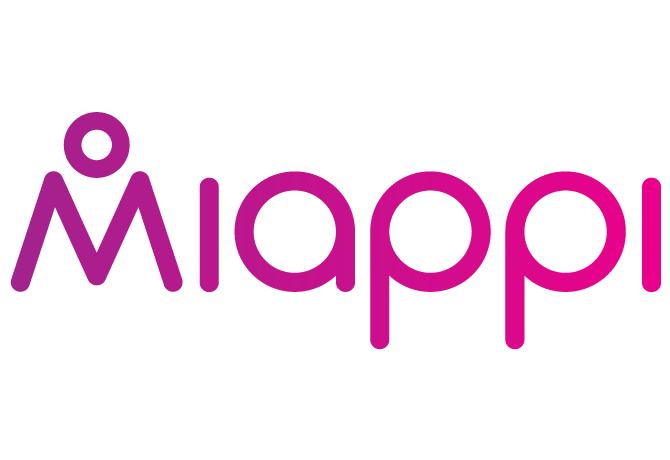Why Do People Join Or Engage In Brand Communities?

Brand communities are crucial to a brand's success. The power of their word of mouth recommendations is undeniable. So for this reason alone, brand marketers need to understand why do people join or engage in brand communities. In this article we will share exactly why these communities form, who is in them and how your brand can tap into them to encourage brand growth.
How Communities are Defining your Brand Image
Today, when it comes to marketing your business, the hard truth is you don’t control your brand image anymore.
Although you have created great products and continuously ensure they’re meeting a need and solving a problem, the narrative you intended to go with them is no longer controlled by you.
So – who is in control of your brand image?
The answer is - all those people on social media who review your products and talk about their experiences with your company that define your brand image – your consumers.
It may be more than a little scary to learn you have limited control over your brand. And so, the question is – how do you take back that control?
The answer is, you don’t. The reality is that in the age of social media, it will always be the consumer who has the final say over how your brand is perceived – and that very perception is your brand image. Your brand image is an aggregate of beliefs, ideas, and impressions consumers and customers hold regarding your brand, which are based not only on their own interactions and experiences with it, but other people’s as well.
As such, you do have the power to influence how your brand is perceived in the public eye, by listening to and engaging with your brand community directly.
To do so, you need to know who your consumers and customers are, what they’re saying, and how you can create more value for them. Do it right and you can encourage community members to be even more vocal, thus helping your community grow organically.
In this article, we’ll look at what a brand community is, who’s in it, and how you can work with your brand community to positively influence the perception of your brand to the wider world.
What is a Brand Community?
“A brand community is a specialized, non-geographically bound community, based on a structured set of social relations among admirers of a brand.”
Source: Albert M Muniz Jr and Thomas O’Guin
The term “brand community” was coined by Muniz and O’Guinn more than 20 years ago, and the definition holds to this day. Brand community is a community that is formed on the basis of a shared attachment to a brand.
Different brand communities vary in their motivations, dynamics, and make up. In fact, there are three distinct forms of a brand community – pools, webs, and hubs – so it’s important to understand what drives each of them.
Let’s explore the traits of these communities.
Community Pools
Pools describe brand communities where members share the same views about a brand, product, cause, or movement, but have minimal contact with each other.
Devotees of Apple products are a good example of a pool-type brand community – millions of people all over the globe won’t even consider buying a new smartphone, tablet, or laptop unless it’s got the Apple logo stamped upon it.
Apple has done a fantastic job of consistently communicating a clear message about the quality and innovation of its wares, creating a huge, global pool of enthusiasts for its products.
Pools hold together consumers who share a set of beliefs about a brand. What they don’t do, however, is deliver much in the way of community benefits, such as fostering interpersonal relationships between members. This is one of the risks of using a pool-based approach to brand building. Because brand affiliation is only supported by an abstract dedication to products and isn’t supplemented with human connections, community members are at risk of dropping out. This risk can intensify when the brand attempts to grow or expand into different areas or categories and the common meaning that holds the community together becomes diluted.
This is where webs come in.
Web-based Communities
In web-based communities, there is a lot more interaction between members. This gives added strength and stability to the community because it is bound together through many and varied relationships. Social network brands such as Facebook and Twitter are good examples – and today, of course, are tools that any brand can utilise to foster their own web-based communities.
Members of a web form a network of moral and emotional support. For example, when Miappi worked with Dove on the #ShowUs campaign and had people post their photos on social media, consumers were able to interact with one another – commenting on each other’s posts and creating new online relationships.
By their very nature, webs are a strong community to engage with because these new relationships come with the power of suggestion. One happy member of a web community will easily influence the decisions of others, with little need for verification. However, the opposite is also true, with unhappy members holding the power to sway the opinions of others, meaning web-based communities must be managed both thoughtfully and carefully.
Community Hubs
A hub describes a community where members are united by their admiration of a central and influential individual.
The individual is nearly always a respected public figure who influences behaviour and opinion within the community. For example, when Miappi worked with Sprite on the #getvocal campaign, the central figure was basketball star LeBron James. The campaign targeted young people between 18 and 30 years of age and drew in members through their shared admiration of James.
Hubs are strong in their power to bring together people who share similar interests and values. However, due to the very nature of hubs, the community can break apart once the central figure is no longer present.
Who is in a Brand Community?

All members of brand communities, no matter the type, play different roles. Let’s take a look at the different types of community members and what motivates them.
Consumers
With brand communities, the consumer is often both a learner and a storyteller. They come to the community to share their experiences with the brand and its products, and also to troubleshoot if they are having issues with a product that the community can help with.
In this way, consumers create added value for each other, the brand, and the community itself by constantly learning from and communicating with other members.
Some consumers remain silent, however, adopting the learner role only. These types of consumers peruse comment sections and review sites to see if they can find solutions without posting their problems. Therefore, just because only one or two members are talking about an issue doesn’t mean it isn’t resonating with many others.
Experts
These are members who are considered to have vast experience within the community. As such, their opinion is usually highly respected. Experts are objective and analytical. They aim to provide information on the best course of action to other members of the community.
Let's use personal care as an example.
In addition to your typical consumer, you may have dermatologists in your brand community. If they publicise their skincare routine and feature a particular product, their choice may carry more weight than that of other members of that community because of their expertise.
Content Creators and Micro Influencers
Content creators cover a wide range of roles, but primarily they are storytellers. Sometimes called micro influencers, these community members are not completely objective, since they may, on occasion, post sponsored content. However, they are still deemed trustworthy within the community.
Some content creators will only work with brands that they believe in. For that reason, they can influence the community because money isn't their primary motivator, even when they share affiliated links and sponsored content. The rest of the community trusts that they would not intentionally promote a poor product.
Celebrities and Macro/Mega Influencers
More and more celebrities are associating themselves with certain brands. Some famous personalities join as consumers, looking to learn and share their experience, often bringing other celebrities into the process. Others want to work with brands that share their ideologies, and still more endorse brands in exchange for high fees.
Celebrities hold huge influence over brand communities. Their opinions count in the eyes of consumers. When a celebrity endorses a brand or product – especially if those endorsements are unsolicited – the effect is that consumers place a higher value on it.
However, the financial cost of a celebrity influencer is high – prohibitively high for some brands.
Shopify reports, that to enlist the services of a mega influencer with over 1 million followers on Instagram, brands can expect to pay over £10,000 per post.
Why Do People Join a Brand Community?

To Find a Supportive Audience
As humans, we are programmed to be social and are always looking for a group to which we can belong. When consumers join a brand community, they are looking for kinship and a feeling that they are understood.
Sometimes people find that members of their immediate social circle do not share or understand their preferences. In such cases, people seek like-minded communities to feel good about themselves and their choices.
Explore Ways to Contribute to a Greater Good
Every time we go online, the world is on fire. It’s easy for us to feel helpless. Many of us feel like we can’t make a difference individually – so we seek to be part of a bigger group that can.
Many communities have formed around the pursuit of contributing to social or environmental missions. Contributing to these important missions on behalf of these communities is a great way for brands to create a meaningful connection with consumers.
Miappi worked with Dove on the Project #ShowUs campaign that seeked to do exactly this.
The brand identified a the issue of women and non-binary indivuals feeling mispresented in media through consumer research and they took action to make a change to this social issue that their customers felt so strongly about.
What made this particular campaign unique was that the brand looked to get those indivuals involved in the campaign, inviting women and non-binary indivuals to submit a picture of themselves and their definition of what beauty is. The resulting content and submissions allowed the team to then connect with those indivuals, in order to create content that is made accessable for commercial use on the Getty Images website.
Cultivate Interest and Skill
We are all looking to grow in new ways and build new skills. The rise of brands like Masterclass and Skillshare shows how thirsty the world is to learn and grow. Building on this trend and by offering your community the opportunity to learn something new, can keep your members engaged for longer.
For example, if your product is food related, community members can share recipes and tips that make healthy snacks appeal to children.
Miappi’s You Can With a Cannon campaign, to celebrate the launch of the Canon M50 camera provides another example.
The campaign gave budding photographers and filmmakers the opportunity to share their creative work online, showcasing what the new product was capable of, while inspiring other amateurs to join in and share their camerawork with the community.
Find and Engage Your Brand Community with Miappi
You have brand ambassadors, even if you don't know they exist. Imagine what they could do with a larger audience. That's where you come in. You can amplify their voice.
The Miappi Community enables brands to become truly people-powered, helping them recruit and collaborate with their most engaged and talented customers.
Using the Miappi Community, brands can nurture relationships with everyday consumers and facilitate creative partnerships to harness the power of community marketing.
With Miappi Community, brands are put in direct contact with consumers who have already demonstrated they are advocates of the brand and have something meaningful to contribute to the conversation. Brands can then use the platform to speak to their members one-on-one or as a group, run surveys to find out what they think of new products and services, brief members to help them create campaign-relevant content, and reward them for their hard work and effort.
Whether you already have a brand community or are looking to build one, speak with an expert today to learn how Miappi Community can help you attain your marketing goals. Engage with your consumers at a personal level, making them feel valued. After all, they hold your brand in their hands.



